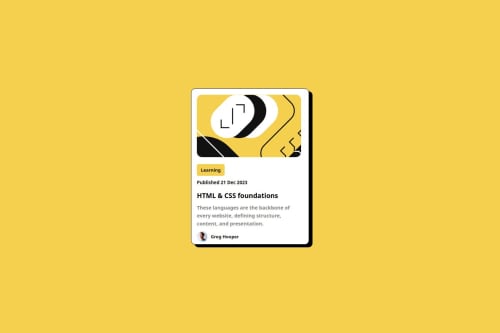Blog Preview Card Html and Css

Solution retrospective
Im so happy to have complete these project and make it responsive what really makes me happy being part of these challenge and finding a solution to it i feel like i did something great. i can"t wait to try another challenges and learn something new
What challenges did you encounter, and how did you overcome them?i have always find it really hard to make my own exactly like the design i try spending some couples of hours on it and try make sure it looks exactly like the design and im so happy how it later turns out. making it responsive its really im so happy i faced it all
What specific areas of your project would you like help with?Any feedback will be ok its keep me learning and stay on tracks.
Please log in to post a comment
Log in with GitHubCommunity feedback
No feedback yet. Be the first to give feedback on Ajibona's solution.
Join our Discord community
Join thousands of Frontend Mentor community members taking the challenges, sharing resources, helping each other, and chatting about all things front-end!
Join our Discord